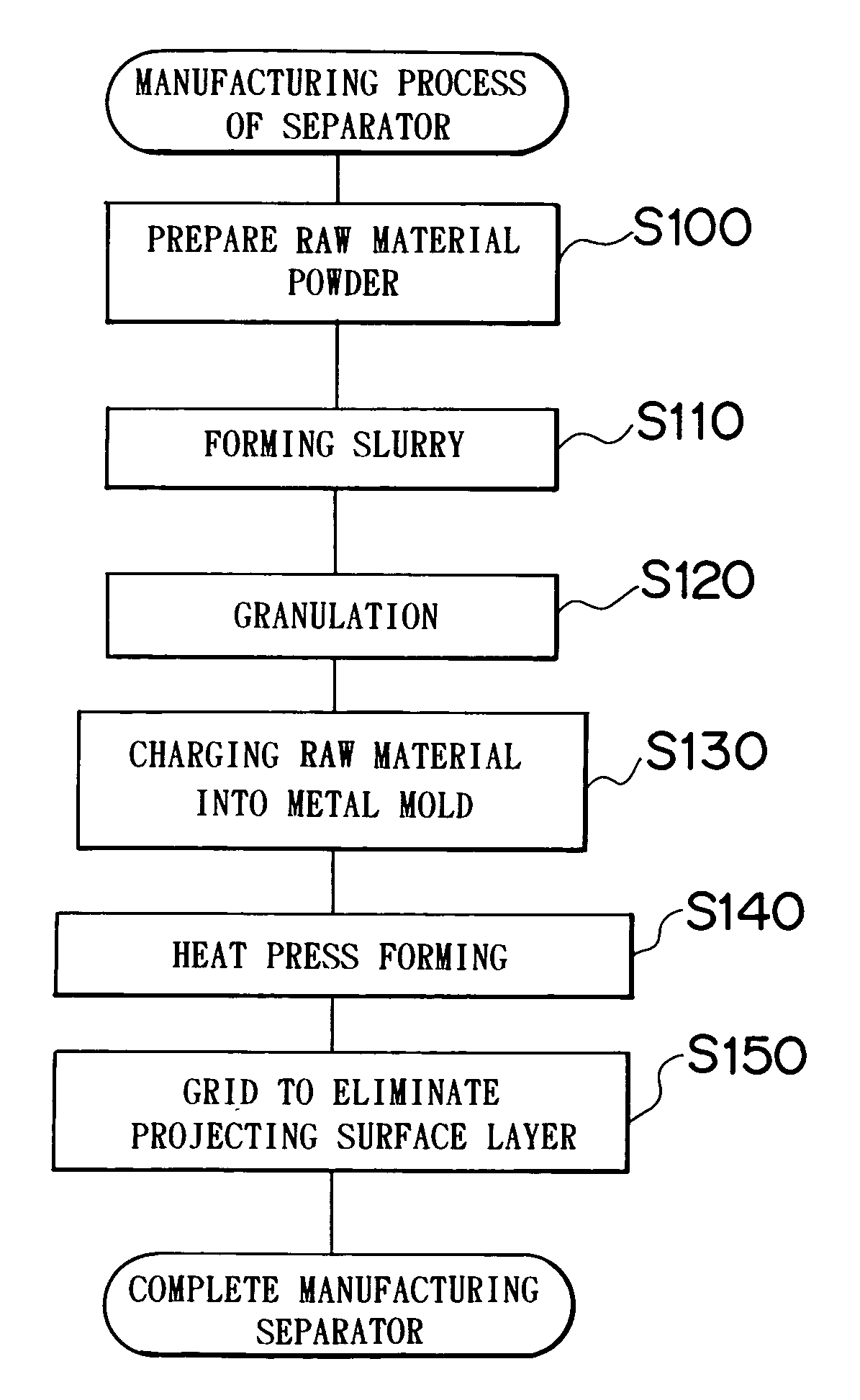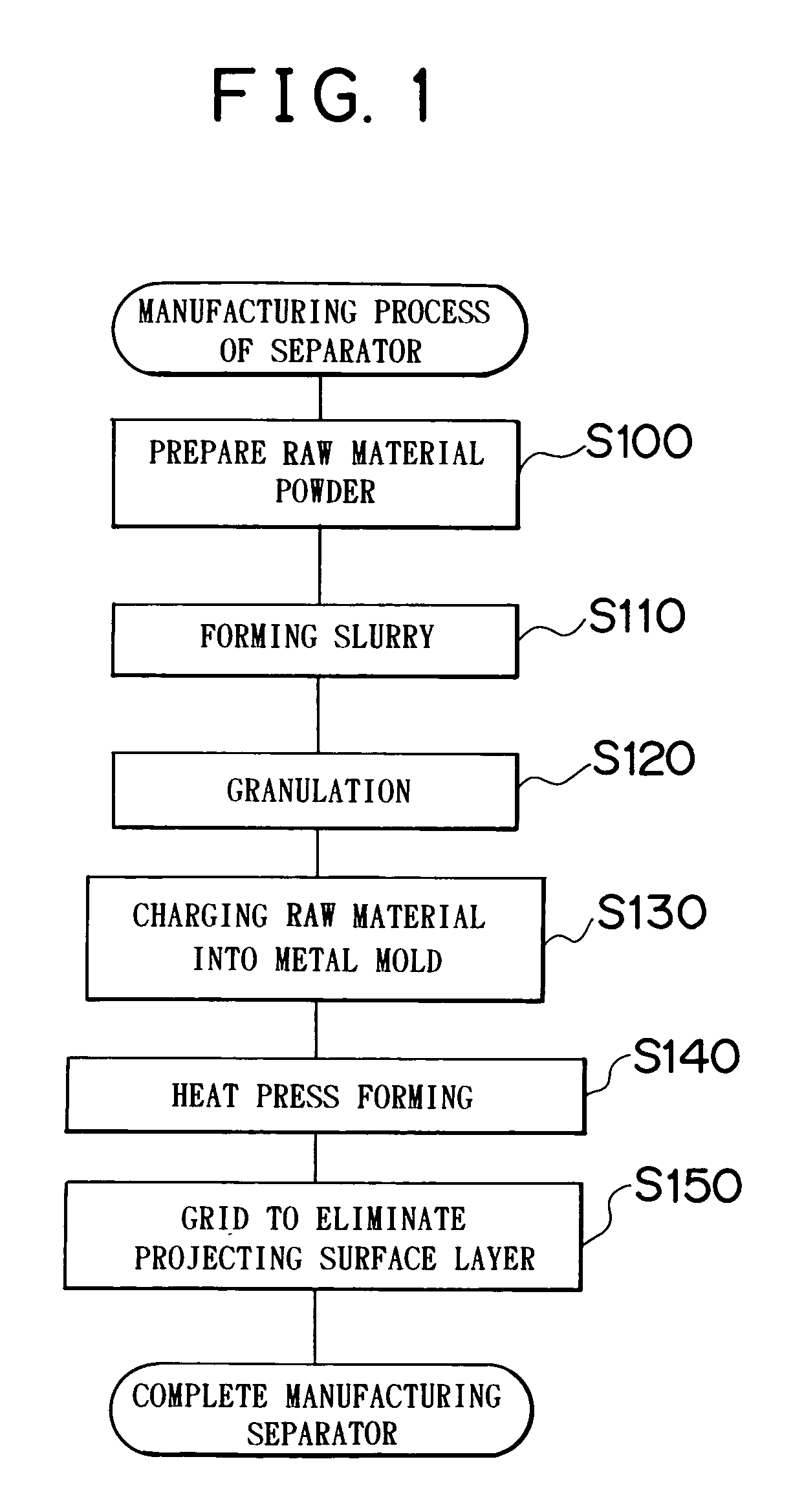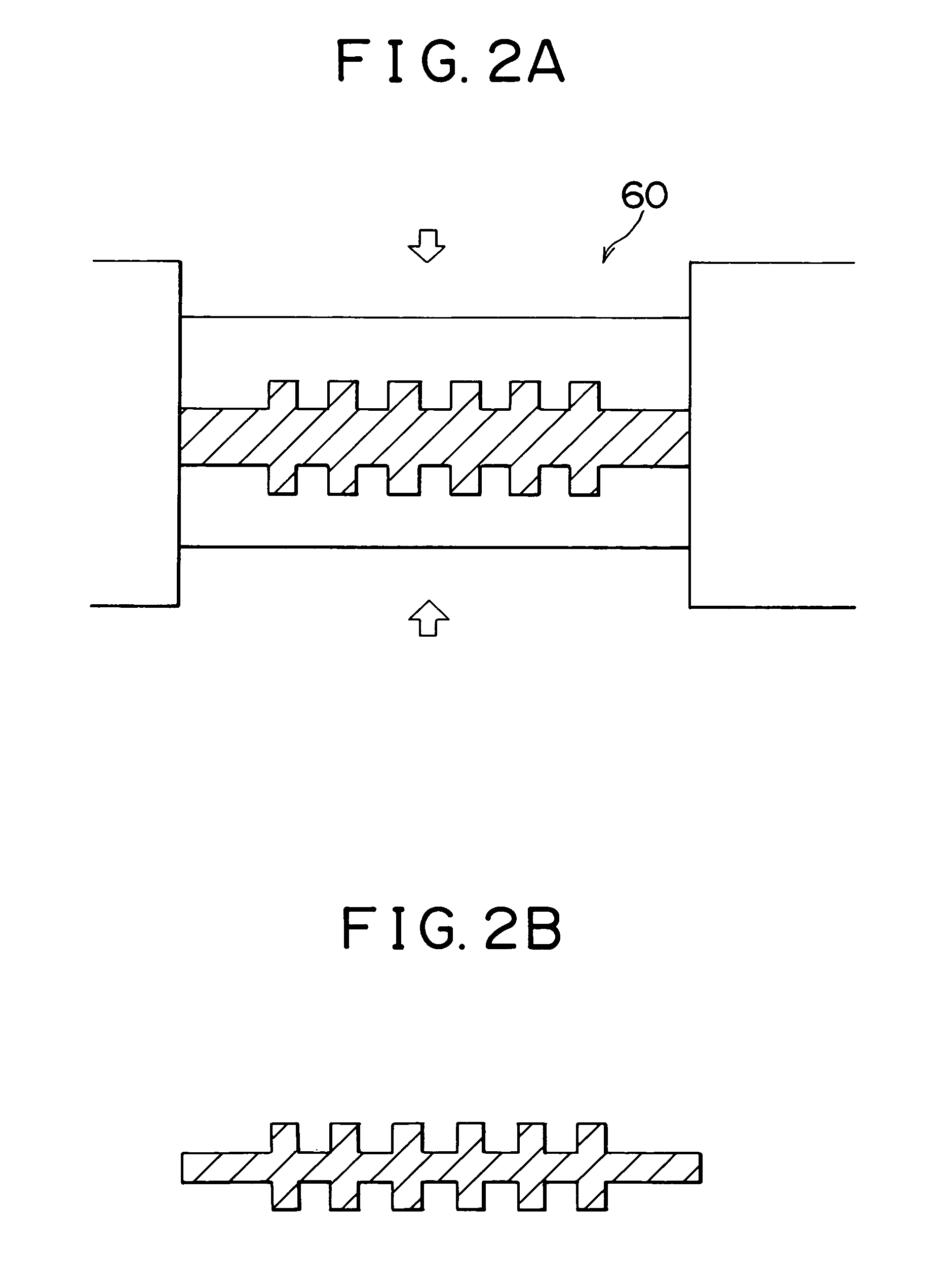Separator for fuel cell and manufacturing method for the same
a technology of separator and fuel cell, which is applied in the field of separator for fuel cell, can solve the problems of deteriorating gas-impermeability of separator, increasing manufacturing cost, and long time required, and achieves the effect of sufficient gas-impermeability
- Summary
- Abstract
- Description
- Claims
- Application Information
AI Technical Summary
Benefits of technology
Problems solved by technology
Method used
Image
Examples
Embodiment Construction
[0029]An embodiment of the present invention will be explained hereinafter.
[0030]A fuel cell having a separator manufactured using a method of manufacturing a separator according to the present invention has a stack structure in which a plurality of unit cells are stacked. FIG. 3 is a schematic view of a unit cell 28 constituting the fuel cell. FIG. 4 is an exploded perspective view showing a structure of the unit cell 28. FIG. 5 is a perspective view showing an appearance of a stack structure 14 formed by stacking the unit cells 28.
[0031]The fuel cell of the present embodiment is of a solid polymer type. The solid polymer type fuel cell includes, as an electrolytic layer, a membrane formed of solid polymer exhibiting excellent conductivity in a wet state. The fuel cell receives, at its anode side, fuel gas containing hydrogen, and receives, at its cathode side, oxide gas containing oxygen, such that the following electrochemical reaction takes place:
H2→2H++2e− (1)
(½)O2+2H++2e−→H2O...
PUM
| Property | Measurement | Unit |
|---|---|---|
| particle size distribution | aaaaa | aaaaa |
| particle size distribution | aaaaa | aaaaa |
| temperature | aaaaa | aaaaa |
Abstract
Description
Claims
Application Information
 Login to View More
Login to View More - R&D
- Intellectual Property
- Life Sciences
- Materials
- Tech Scout
- Unparalleled Data Quality
- Higher Quality Content
- 60% Fewer Hallucinations
Browse by: Latest US Patents, China's latest patents, Technical Efficacy Thesaurus, Application Domain, Technology Topic, Popular Technical Reports.
© 2025 PatSnap. All rights reserved.Legal|Privacy policy|Modern Slavery Act Transparency Statement|Sitemap|About US| Contact US: help@patsnap.com



